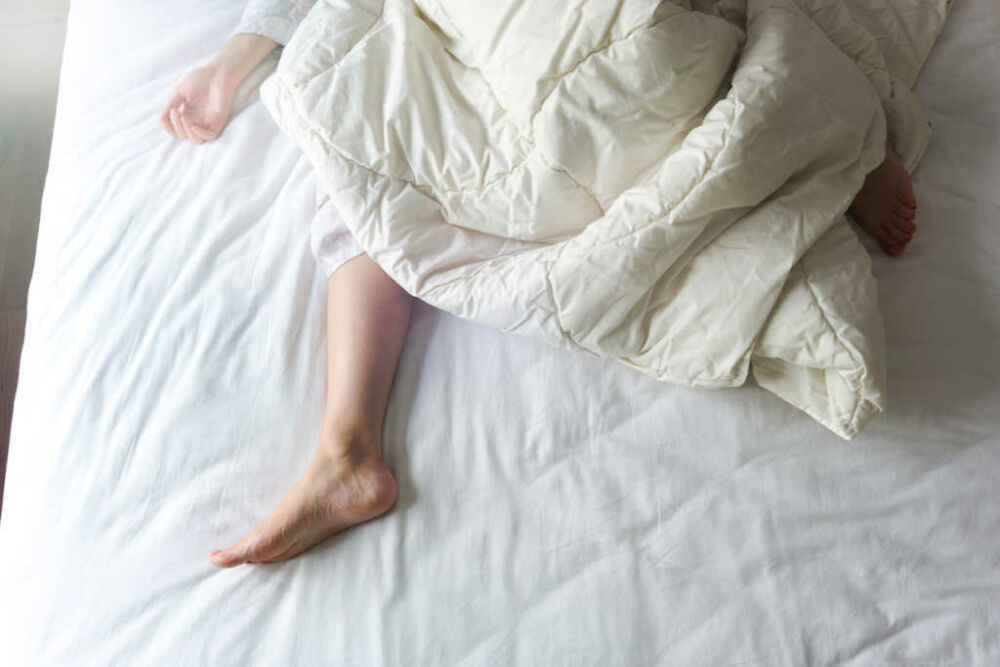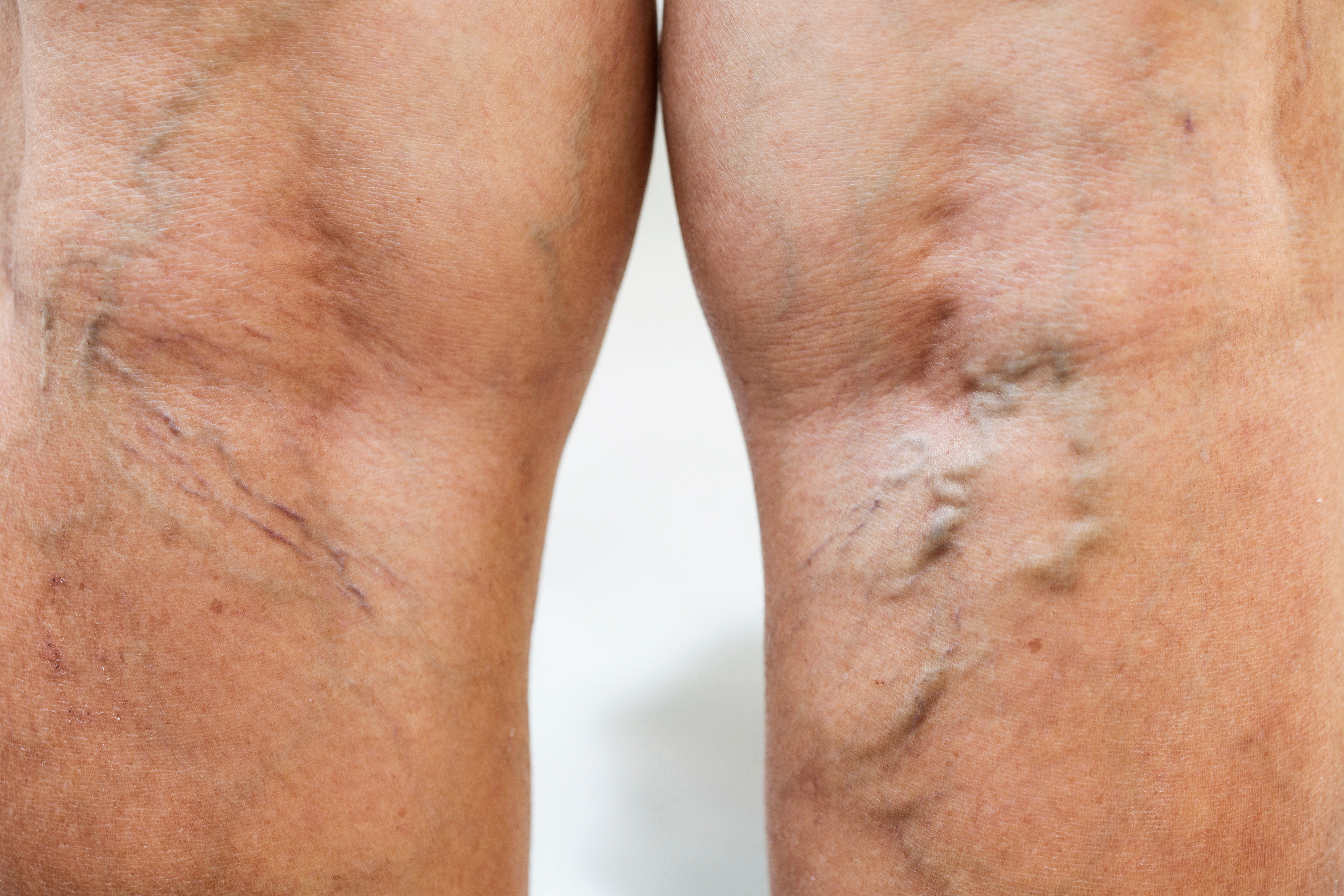
Treatment for Restless Legs Syndrome
Restless Legs Syndrome (RLS) is a common condition, affecting 2-4% of the adult population. Although its cause is not completely known there may be an association between RLS and chronic venous insufficiency.

Medically reviewed by Swapna Anandan, MD, on September 26, 2025
Do your legs feel like you’re walking through wet cement by the end of the day? You are not alone. While occasional leg heaviness does not always mean something serious is going on, if that heavy, achy feeling has become your new normal, it might be a sign of vein problems. Let’s explore what might be happening and how a qualified vein expert can pinpoint the cause, helping you trade that weighed-down feeling for lighter, healthier steps.

For this blog, we consulted with Dr. Swapna Anandan, a vein physician from Center for Vein Restoration (CVR). She is a fellowship-trained, board-certified vein specialist and the lead physician in CVR’s Bloomfield, Connecticut, vein clinic.
📅Schedule a consultation with Dr. Anandan in Bloomfield, CT: Book Online HERE.
📞Prefer to talk to a Patient Services Representative first? Call: 240-965-3915
📍Would you like to schedule a consultation at any of CVR’s other 120+ vein centers nationwide? CLICK HERE
Varicose veins are more than a simple cosmetic concern. They develop when the tiny valves inside your leg veins weaken or fail, allowing blood to flow backward and pool in the lower legs. This pooling increases pressure inside the veins, which can lead to swelling, aching, and that familiar heavy, weighted-down feeling in your legs.
This increased pressure can lead to a condition known as chronic venous insufficiency (CVI). This progressive condition can cause:

Above: Spider veins (left) and varicose veins (right)
CVI can also lead to more serious problems, such as skin changes, venous ulcers, and even deep vein thrombosis (DVT). Treating varicose veins can reduce your risk of these serious complications as well as improve both appearance and comfort, helping you move more freely.

Heavy, achy legs can result from a range of conditions, but certain symptoms suggest that vein disease (chronic venous insufficiency) may be the culprit:
If you have more than one of these symptoms, it’s worth a visit to one of the 120+ Center for Vein Restoration vein centers nationwide for a quick, painless evaluation. Early diagnosis allows for treatment before the condition worsens.
Center for Vein Restoration is the nation’s largest physician-led vein center network. Since 2007, we have specialized exclusively in vein health. Our board-certified physicians are industry leaders, educators, and innovators dedicated to providing personalized, evidence-based care.
👉 Book your consultation with a CVR vein specialist today and discover how simple relief can be.
Anyone can experience heavy-feeling legs, but some individuals are at a higher risk than others. Knowing your personal risk factors can help you take preventive action:
Knowing your personal risks enables you to take simple steps, such as staying active, maintaining a healthy weight, and seeking medical care promptly, to protect your vein health.
At Center for Vein Restoration, diagnosis begins with a thorough health history and a careful physical examination to identify swelling, skin changes, or bulging veins. The gold standard test is a duplex ultrasound (performed outside the skin), which is painless and non-invasive.
In some cases, additional imaging can reveal hidden pelvic vein blockages. Once diagnosed, your board-certified CVR vein doctor will create a customized plan to relieve symptoms and protect your long-term vein health.
CVR physicians have performed hundreds of thousands of successful vein procedures. We use the latest diagnostic technology and treatment techniques, ensuring you receive the safest, most effective care available. Our patient-first approach means we focus on your comfort, results, and long-term health.
📞 Call Center for Vein Restoration at 240-965-3915
📅 Or book online HERE
In addition to professional vein care, there are steps you can take to feel better and protect your veins:
“These self-care tips help manage discomfort, but they won’t fix the vein disease itself. For a permanent solution, professional treatment is usually required.” –Swapna Anandan, MD
If lifestyle changes aren’t enough, CVR offers safe, minimally invasive outpatient vein procedures that require only local anesthesia and allow you to return home the same day with no downtime.
Most insurances, including Medicare and Medicaid, cover these medically necessary vein treatments:
Each treatment is safe, effective, and performed by a board-certified vein specialist at Center for Vein Restoration, who has extensive experience.

Ignoring vein disease doesn’t just leave you uncomfortable — it can lead to serious complications, such as: Venous Ulcers – Painful, slow-healing sores that can become infected and severely limit mobility.
Over time, untreated venous insufficiency can also cause permanent skin discoloration, thickening, or hardening (lipodermatosclerosis), making the skin more fragile and prone to injury.
Prompt evaluation by a board-certified Center for Vein Restoration vein specialist not only protects your legs but also preserves your ability to stay active, maintain independence, and enjoy a better quality of life. The earlier you address the problem, the more treatment options you have and the faster you can return to feeling your best.
You do not have to live with heavy, achy legs. Relief can start with a simple visit to one of our 120+ convenient locations nationwide. 240-965-3915 to speak with a Patient Services Representative or book your consultation below ⬇️and take your first step toward lighter, healthier legs.
👉 Book your consultation with a CVR vein specialist today and discover how simple relief can be.
Scientific Articles for reference:
Authors: Eri Fukaya, M.D., Ph.D., and Raghu Kolluri, M.D., Author Info & Affiliations
Robert T. Eberhardt, MD, and Joseph D. Raffetto, MD., Author Info & Affiliations